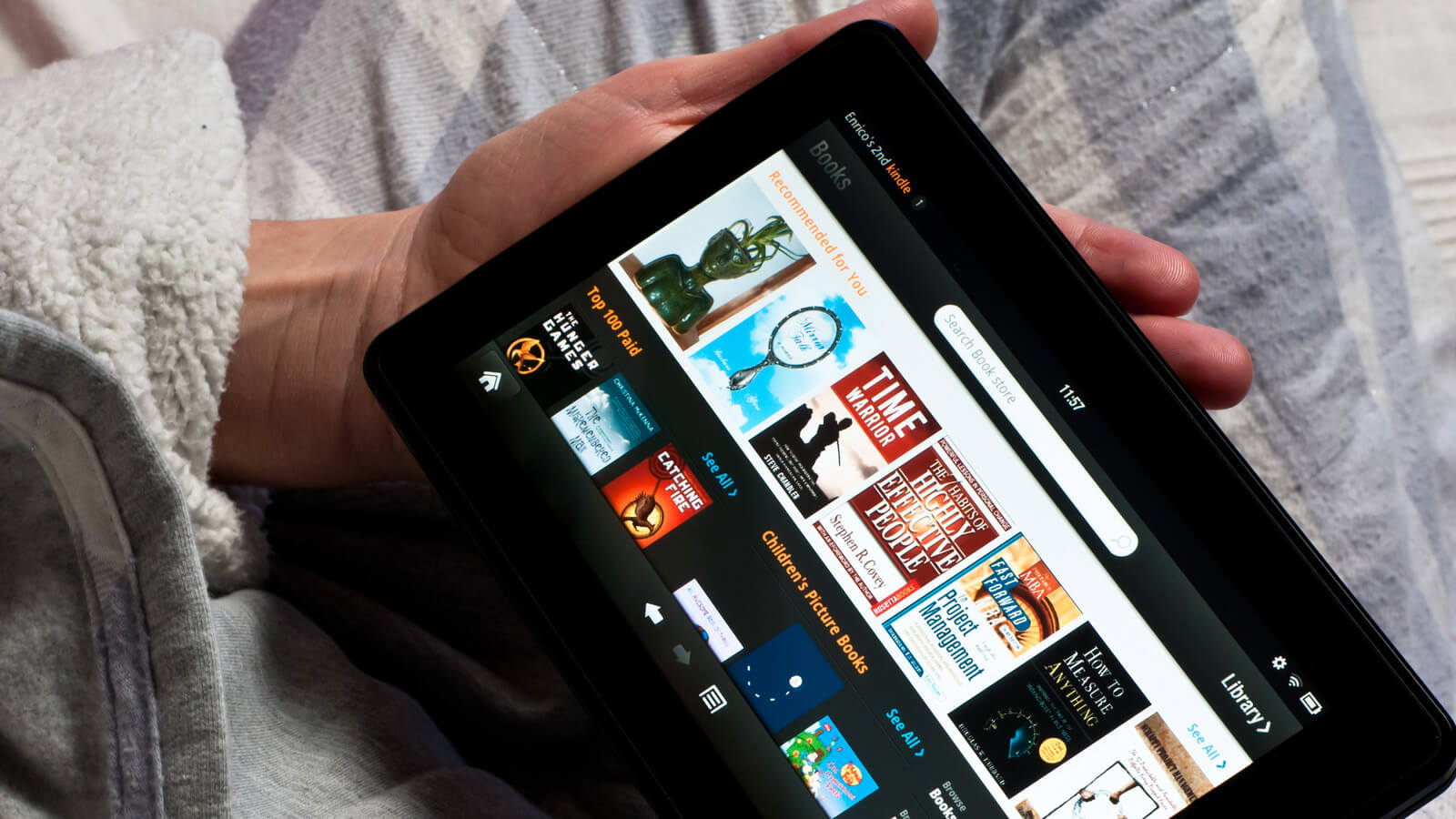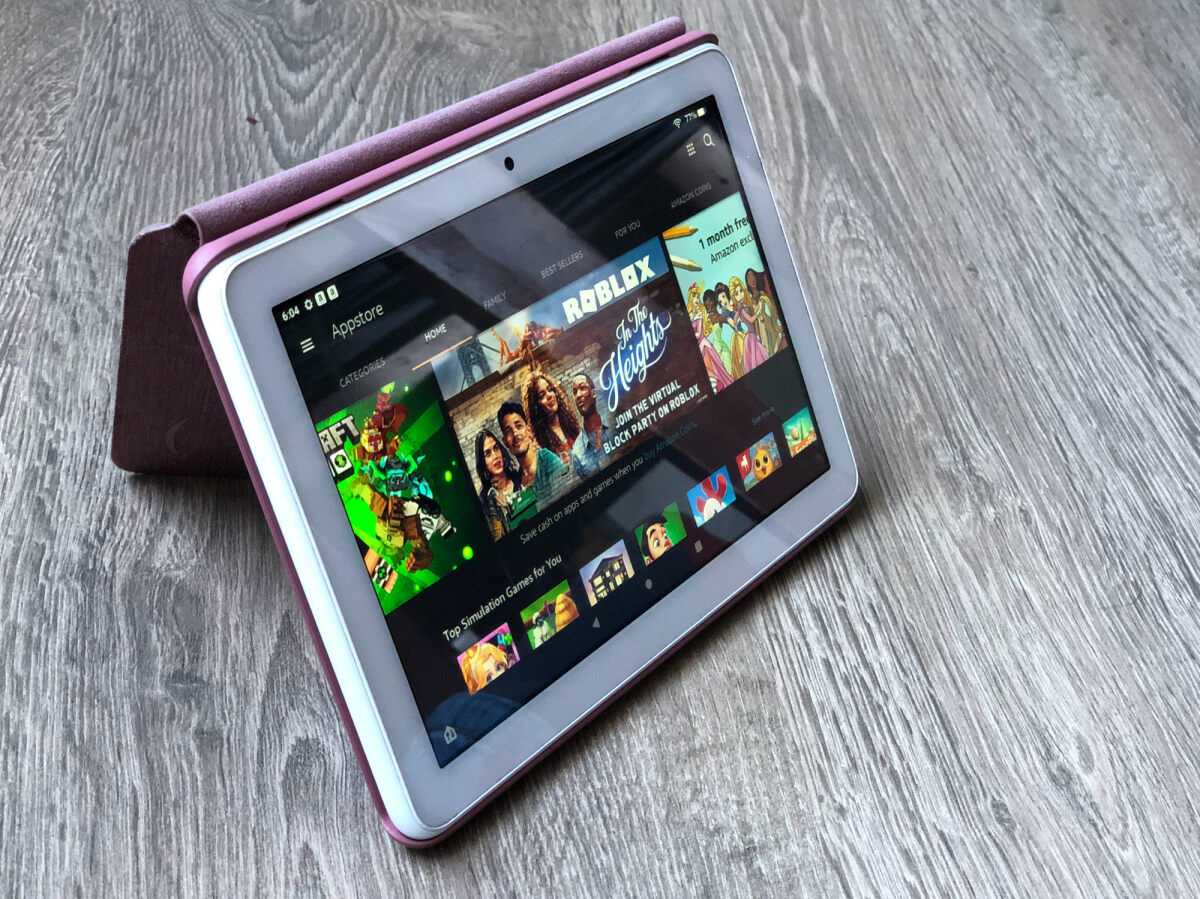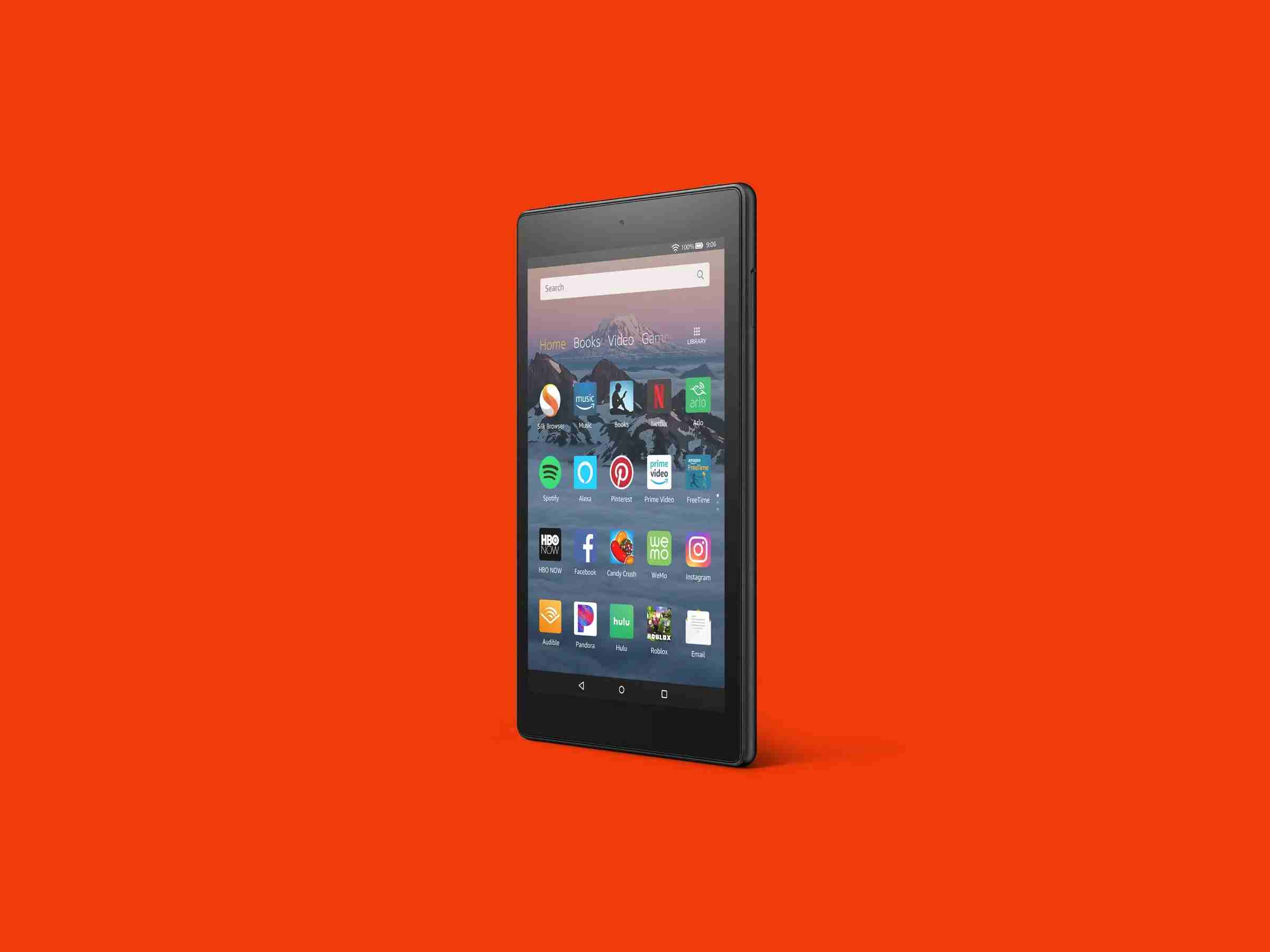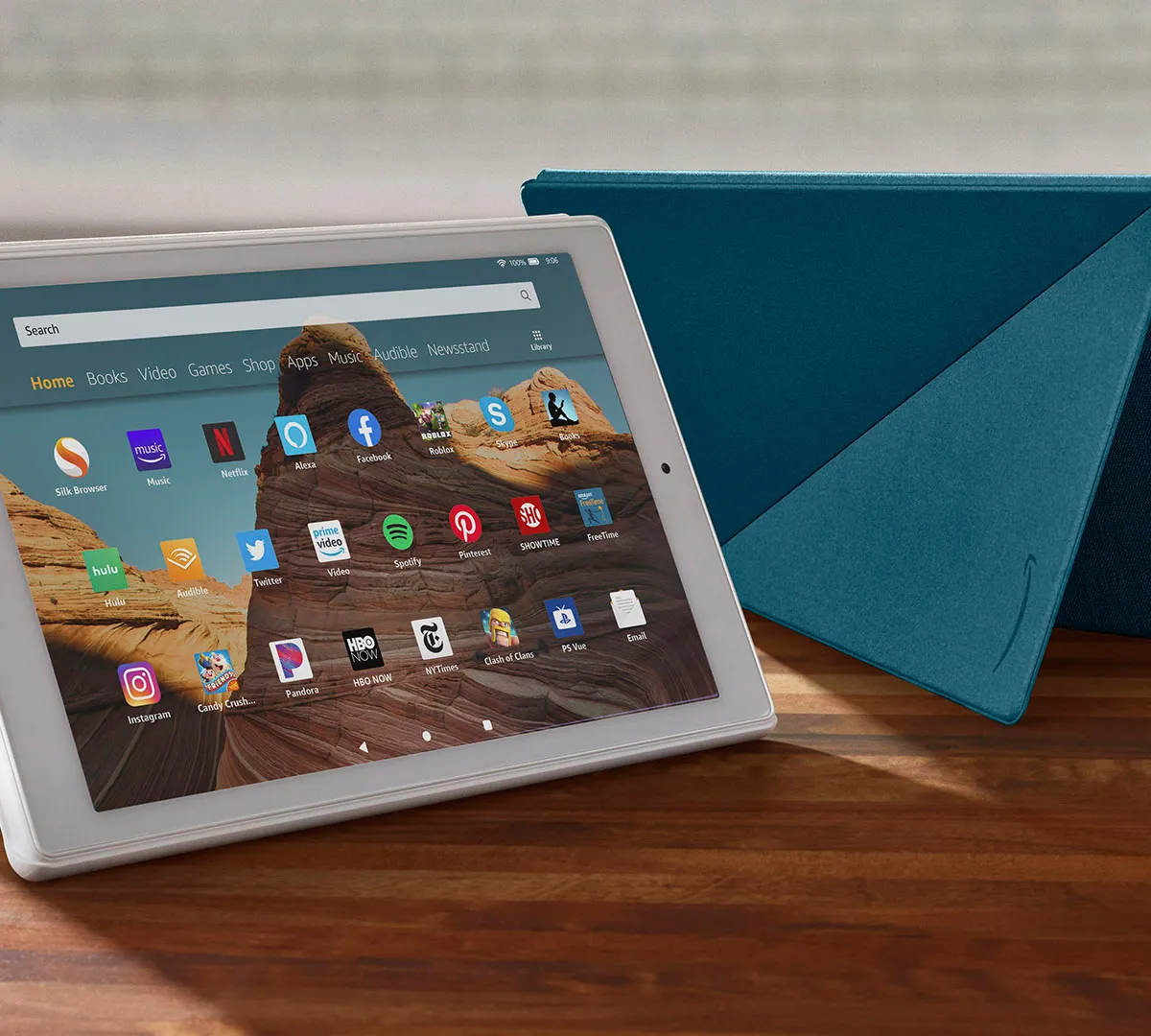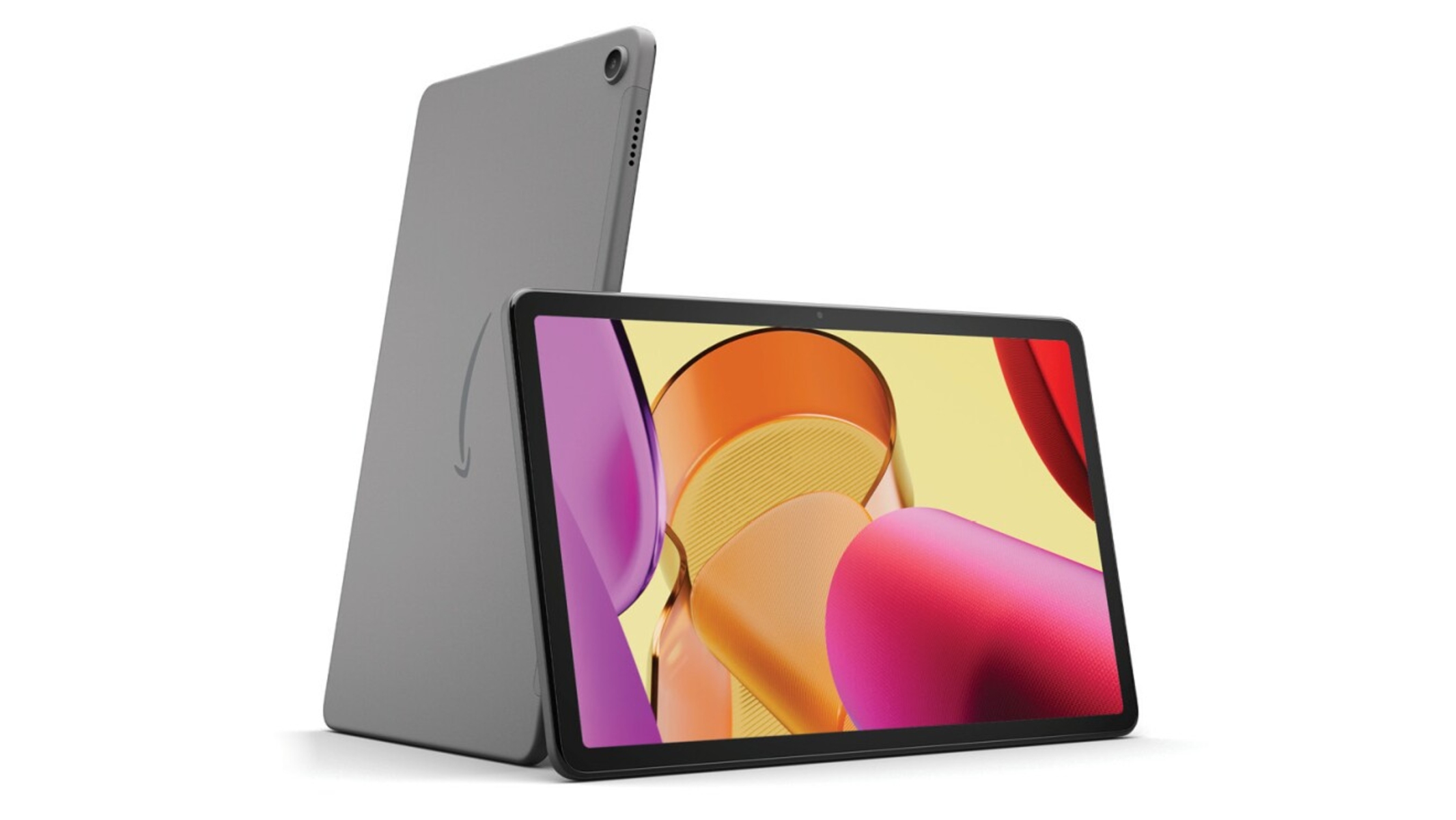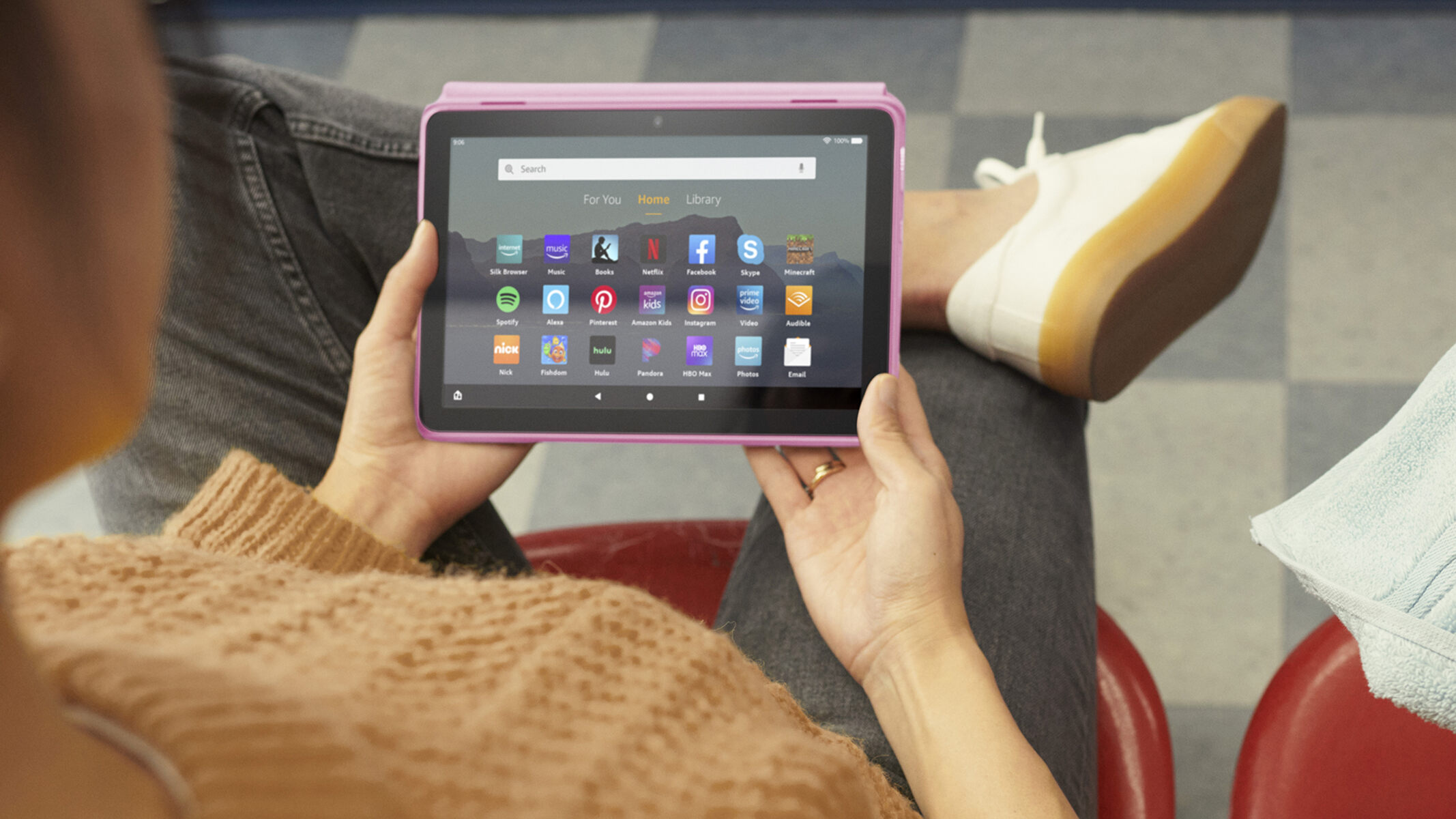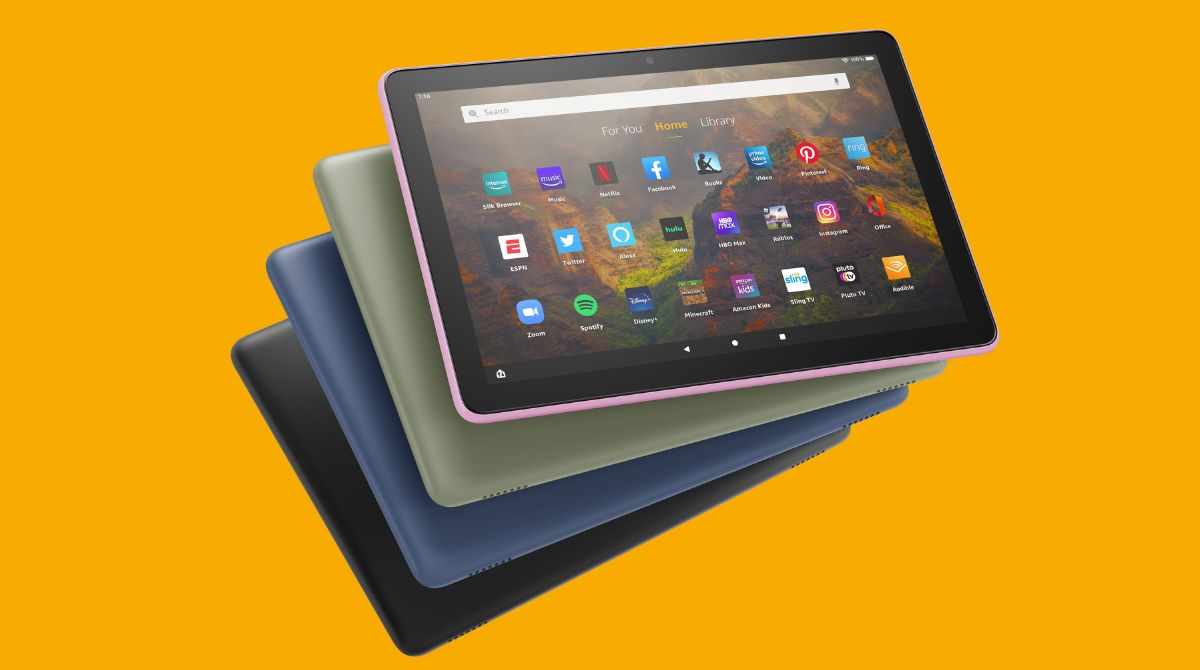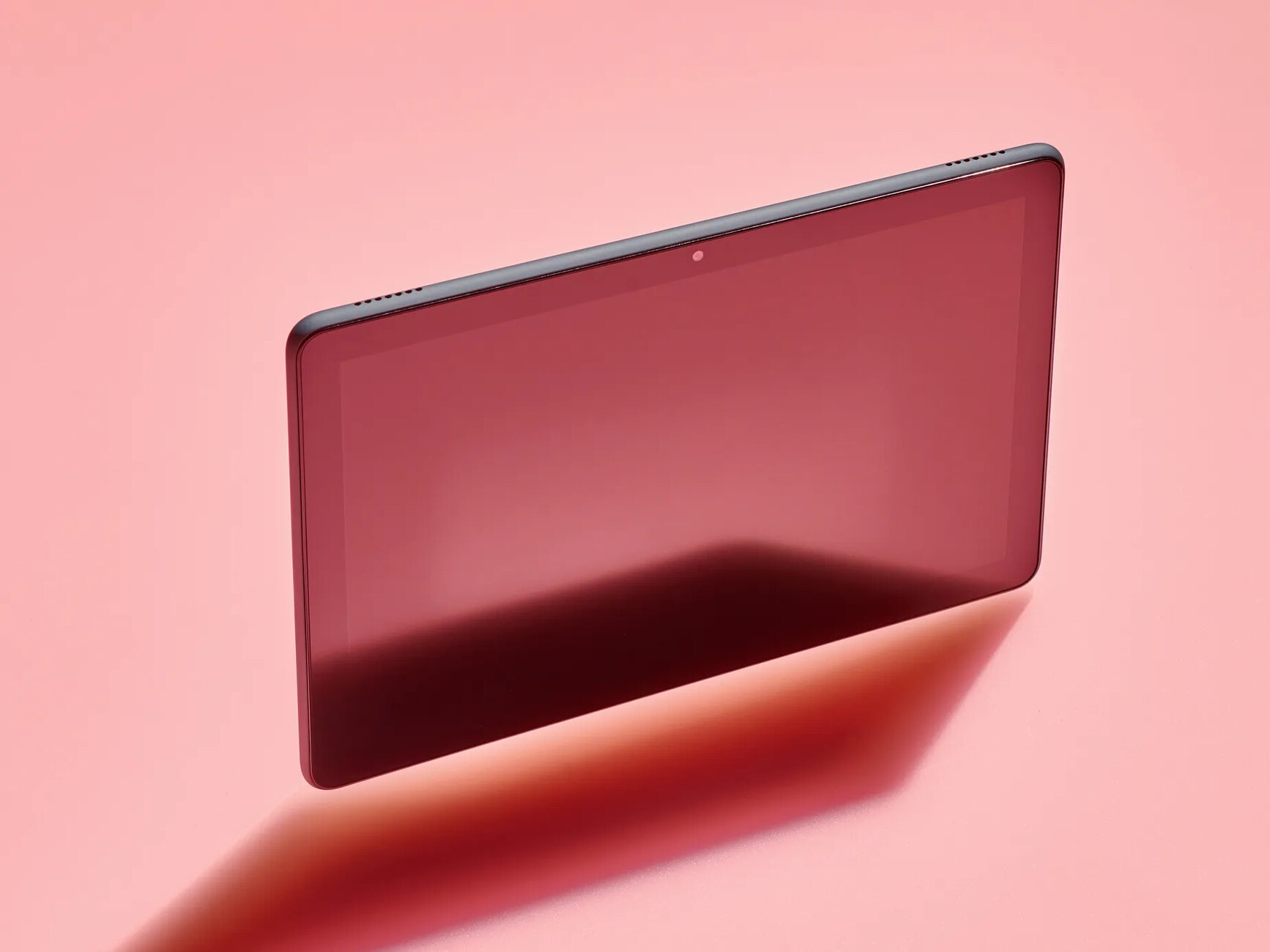Introduction
Welcome to the world of Amazon Fire tablets! These versatile devices offer a wide range of features and functionalities, allowing you to enjoy your favorite books, movies, games, and more. However, over time, you may notice that your Amazon Fire tablet starts to slow down, affecting your overall experience.
But fear not! In this article, we will explore some practical tips and tricks to help you make your Amazon Fire tablet faster again. Whether you’re a tech-savvy user or just starting to navigate the digital realm, these simple steps will help optimize your tablet’s performance and ensure smooth and efficient operation.
Nowadays, our tablets have become an indispensable part of our daily lives, assisting us in various tasks, including work, entertainment, communication, and more. Therefore, it’s crucial to maintain your tablet’s performance for uninterrupted productivity and enjoyment.
Let’s dive in and discover how you can give your Amazon Fire tablet a much-needed speed boost!
Clear Cache and Data
One of the most effective ways to improve the speed and performance of your Amazon Fire tablet is by clearing its cache and data. Over time, apps and system processes accumulate temporary files and data, which can significantly slow down your device.
To clear the cache and data on your Amazon Fire tablet, follow these simple steps:
- Go to the Settings menu by swiping down from the top of your tablet’s screen and tapping the gear icon.
- Scroll down and select “Apps & Games.”
- Tap on “Manage All Applications.”
- Select the app or process that you want to clear the cache and data for.
- On the app’s detail page, you will find options to clear cache and clear data. Tap on the respective buttons to perform the action.
Clearing the cache will delete temporary files that can slow down your tablet, while clearing data will remove app-specific files and settings. Keep in mind that clearing data for certain apps may reset them to their default settings, so exercise caution when performing this action.
By regularly clearing the cache and data of your apps, you can free up valuable storage space and help your tablet run more smoothly. It’s recommended to perform this maintenance task every few weeks to keep your device in optimal condition.
Now that you’ve learned how to clear cache and data on your Amazon Fire tablet, let’s move on to the next tip to further improve its speed and performance.
Uninstall Unnecessary Apps
As you use your Amazon Fire tablet, you may accumulate a multitude of apps that you no longer use or need. These unused apps not only take up valuable storage space but can also have a negative impact on your tablet’s performance.
To free up space and boost the speed of your Amazon Fire tablet, it’s essential to uninstall unnecessary apps. Here’s how you can remove unwanted apps from your device:
- Navigate to the Settings menu by swiping down from the top of your tablet’s screen and tapping the gear icon.
- Scroll down and select “Apps & Games.”
- Tap on “Manage All Applications.”
- Review the list of installed apps and select the app you want to uninstall.
- On the app’s detail page, tap on the “Uninstall” button.
- Confirm the uninstallation by selecting “OK” when prompted.
By removing unnecessary apps from your Amazon Fire tablet, you not only free up storage space but also reduce the burden on your device’s resources. This can lead to improved performance and faster operation.
As you go through the list of installed apps, take a moment to consider which ones you truly need and use on a regular basis. Removing apps that you no longer use can have a significant impact on freeing up storage and optimizing your tablet’s performance.
Keep in mind that pre-installed system apps or apps that are essential for the firmware to function properly should not be uninstalled. However, you can disable them if they are not in use to prevent them from running in the background and consuming resources.
Now that you’ve learned how to uninstall unnecessary apps from your Amazon Fire tablet, let’s move on to the next tip for improving its speed and performance.
Disable Animations
Animations, while visually appealing, can often contribute to slower performance on your Amazon Fire tablet. Disabling animations can help speed up your tablet’s response time and make it more responsive overall.
Here’s how you can disable animations on your Amazon Fire tablet:
- Access the Settings menu by swiping down from the top of your tablet’s screen and tapping the gear icon.
- Scroll down and select “Accessibility.”
- Tap on “Vision.”
- Scroll down and locate the “Animation” option.
- Toggle off the switch to disable animations.
By disabling animations, your tablet will no longer use resources to render these visual effects, resulting in faster navigation, app switching, and overall system performance.
While disabling animations can significantly enhance your tablet’s speed, it’s important to note that this change may affect the user experience, making the interface appear slightly less visually fluid. However, the trade-off in terms of performance may outweigh the loss in visual aesthetics for some users.
If you find that the performance improvements are significant and more important to you than the animations, then keeping the animations disabled can be a worthwhile choice.
Now that you know how to disable animations on your Amazon Fire tablet, let’s move on to the next tip to optimize its speed and performance.
Use Lighter Apps
Using lighter apps on your Amazon Fire tablet can greatly contribute to improving its speed and performance. Lighter apps are designed to use fewer system resources, resulting in faster load times and smoother operation.
Here are a few tips on how to find and use lighter apps:
- Search for alternative apps: Look for alternative apps that offer similar functionality but are optimized for low-resource devices. These apps are often labeled as “lite” or “go” versions.
- Check app reviews: Before downloading an app, read reviews from other users to see if it is known for being lightweight and resource-friendly.
- Consider web apps: Instead of installing resource-heavy apps, try using web apps or mobile versions of websites. These can often provide a similar experience without consuming as much storage space or system resources.
- Manage app permissions: Be mindful of the permissions that apps require. Apps that have excessive permissions may be using more system resources than necessary.
- Regularly update apps: App developers often release updates that include performance improvements and bug fixes. Make sure to keep your apps up to date to benefit from these optimizations.
By using lighter apps, you can reduce the strain on your Amazon Fire tablet’s resources, resulting in faster response times and improved overall performance. Additionally, using lightweight apps can help free up valuable storage space, allowing your tablet to operate more efficiently.
Remember that the specific apps you choose to use may depend on your individual needs and preferences. Take some time to research and explore different options to find the ones that best meet your requirements while providing a speedy and efficient experience.
Now that you’ve learned the benefits of using lighter apps on your Amazon Fire tablet, let’s move on to the next tip for optimizing its speed and performance.
Restart Your Tablet Regularly
Restarting your Amazon Fire tablet regularly is a simple yet effective way to maintain its performance and keep it running smoothly. By restarting your tablet, you can clear out temporary files, refresh system processes, and resolve any minor software glitches that may be impacting performance.
Here’s how you can restart your Amazon Fire tablet:
- Press and hold the power button on your tablet until a menu appears.
- Select “Restart” from the menu.
- Wait for your tablet to shut down and restart.
Performing regular restarts helps to close background processes and allows your tablet to start with a clean slate. This can significantly improve performance by freeing up system resources that may have become overloaded over time.
It’s a good practice to restart your tablet at least once a week, or more frequently if you notice any slowdowns or performance issues. By incorporating this simple step into your routine, you can ensure that your Amazon Fire tablet operates at its best.
Additionally, restarting your tablet can also help resolve certain software-related issues, such as unresponsive apps or connectivity problems. It’s like giving your tablet a fresh start and can often provide a quick solution to minor glitches.
Now that you’ve learned the importance of restarting your Amazon Fire tablet regularly, let’s proceed to the next tip to further optimize its speed and performance.
Close Background Apps
One common reason for a slow-performing Amazon Fire tablet is having too many apps running in the background. These background apps consume valuable system resources, such as CPU and RAM, even when you’re not actively using them.
To improve your tablet’s speed and performance, it’s important to regularly close unnecessary background apps. Here’s how you can do it:
- Swipe down from the top of your tablet’s screen to access the Quick Settings menu.
- Tap the gear icon to open the Settings menu.
- Select “Apps & Games.”
- Tap on “Manage All Applications.”
- You will see a list of apps that are currently running in the background. Select the app you want to close.
- On the app’s detail page, tap on the “Force Stop” button to close the app.
By closing unnecessary background apps, you can free up valuable system resources and allocate them to the apps and processes that you are actively using. This can result in a noticeable improvement in your tablet’s speed and responsiveness.
It’s important to note that system apps and services, as well as apps that provide important notifications, should not be forcefully stopped. Exercise caution when closing apps, and only close those that you are sure are not essential for your tablet’s operation.
Make it a habit to periodically check the list of running apps and close any that are no longer needed. By managing your background apps effectively, you can ensure that your Amazon Fire tablet utilizes its resources efficiently and performs optimally.
Now that you know how to close background apps on your Amazon Fire tablet, let’s move on to another tip for enhancing its speed and performance.
Update Your Tablet’s Software
Keeping your Amazon Fire tablet’s software up to date is crucial for maintaining its speed, performance, and security. Software updates often include bug fixes, performance improvements, and new features that can enhance your tablet’s overall functionality.
Here’s how you can update your tablet’s software:
- Swipe down from the top of your tablet’s screen to access the Quick Settings menu.
- Tap the gear icon to open the Settings menu.
- Scroll down and select “Device Options.”
- Tap on “System Updates.”
- Tap on “Check Now” to search for new updates.
- If an update is available, follow the on-screen instructions to download and install it.
It’s recommended to connect your tablet to a Wi-Fi network before checking for updates to ensure a stable and faster download process.
Regularly updating your tablet’s software ensures that you have the latest optimizations and bug fixes, which can significantly improve its performance. Additionally, software updates often include security patches that protect your tablet from potential vulnerabilities or threats.
By staying up to date with the latest software releases, you can make the most out of your Amazon Fire tablet and enjoy a smoother and more efficient user experience.
It’s important to note that software updates may require some time to download and install, depending on the size and complexity of the update. Make sure to have your tablet connected to a power source or have sufficient battery power during the update process.
Now that you understand the importance of updating your tablet’s software, let’s move on to the final tip for optimizing its speed and performance.
Reset Your Tablet to Factory Settings
If you’ve tried all the previous tips and your Amazon Fire tablet is still experiencing performance issues, a more drastic step you can take is to reset your tablet to its factory settings. This process will erase all data, accounts, and settings on your tablet and restore it to its original state when you first purchased it.
Here’s how you can reset your Amazon Fire tablet to factory settings:
- Swipe down from the top of your tablet’s screen to access the Quick Settings menu.
- Tap the gear icon to open the Settings menu.
- Scroll down and select “Device Options.”
- Tap on “Reset to Factory Defaults.”
- Review the information presented and tap on “Reset” to confirm.
It’s important to note that resetting your tablet to factory settings will delete all data, including apps, personal files, and settings. Therefore, before proceeding with the reset, make sure to back up any important data that you want to keep.
Performing a factory reset can help resolve persistent performance issues, eliminate any potential software conflicts, and give your tablet a fresh start. After resetting your tablet, you can selectively reinstall the necessary apps and restore your data from the backup.
It’s worth considering a factory reset if your tablet continues to exhibit significant performance problems despite all other troubleshooting methods. However, be aware that this option should be used as a last resort as it can be time-consuming to set up your tablet again to your desired preferences.
Remember to take note of any login credentials or activation codes for apps or services beforehand, as you will need to re-enter them after the reset.
Now that you’ve learned how to reset your Amazon Fire tablet to factory settings, you’re equipped with a powerful solution to address persistent performance issues and restore your tablet’s optimal performance.
Conclusion
In this article, we have explored various tips and techniques to make your Amazon Fire tablet faster and optimize its overall performance. By implementing these strategies, you can ensure a smoother and more efficient experience while using your tablet.
We began by discussing the importance of clearing the cache and data of your apps, which helps free up storage space and eliminate unnecessary temporary files. Uninstalling unnecessary apps also plays a vital role in freeing up resources and improving speed.
Disabling animations and using lighter apps can significantly enhance your tablet’s performance by reducing the strain on system resources. Additionally, restarting your tablet regularly helps flush out temporary processes, while closing background apps prevents them from consuming valuable resources.
Updating your tablet’s software is crucial for staying up to date with performance improvements, bug fixes, and security enhancements. And finally, as a last resort, resetting your tablet to factory settings can resolve persistent issues and restore optimal performance.
Remember to approach each tip based on your specific needs and preferences, and always exercise caution when performing actions that may delete data or affect your tablet’s settings.
By following these guidelines, you can ensure that your Amazon Fire tablet continues to deliver a fast and seamless user experience, allowing you to enjoy your favorite content, stay productive, and make the most out of your device.







